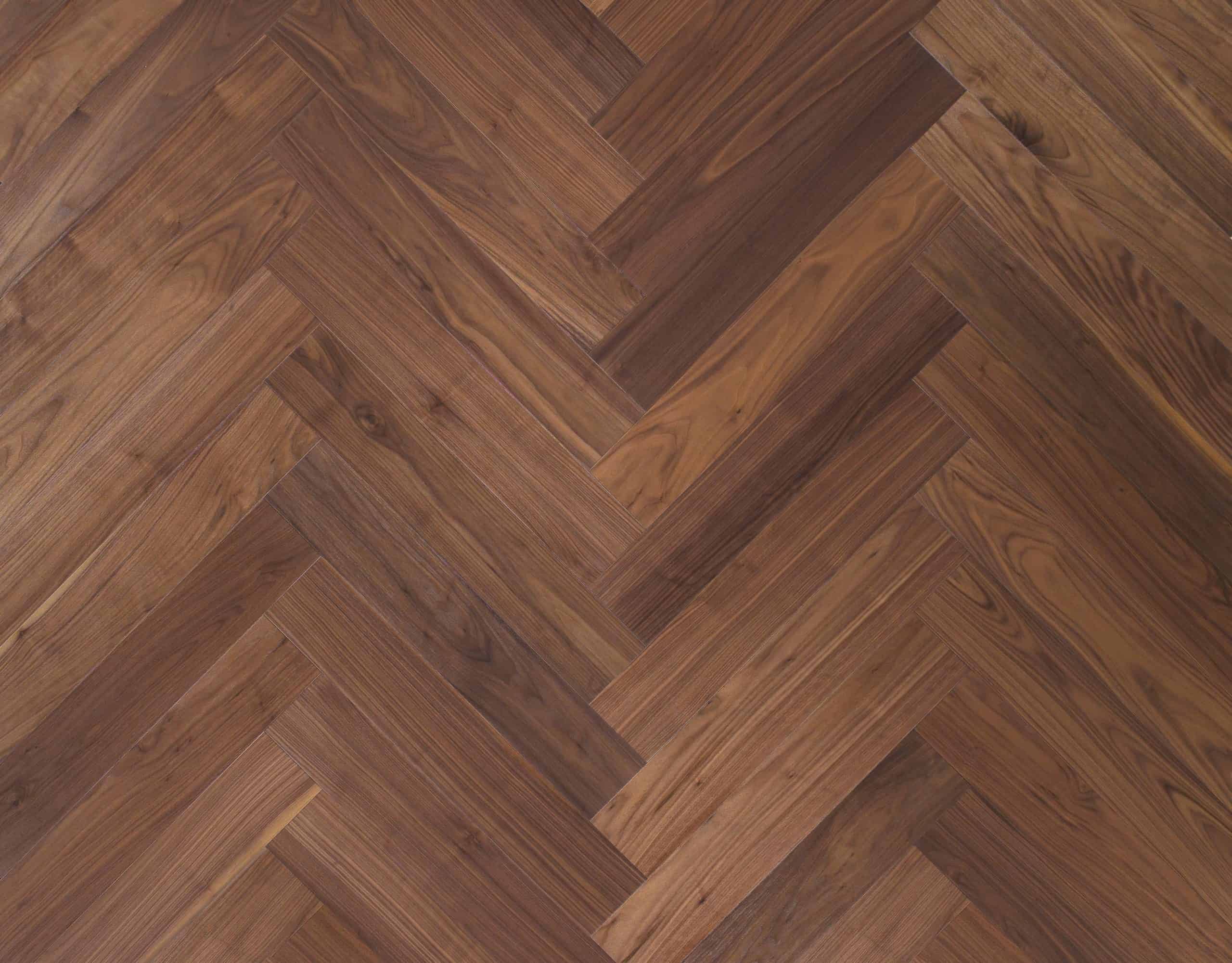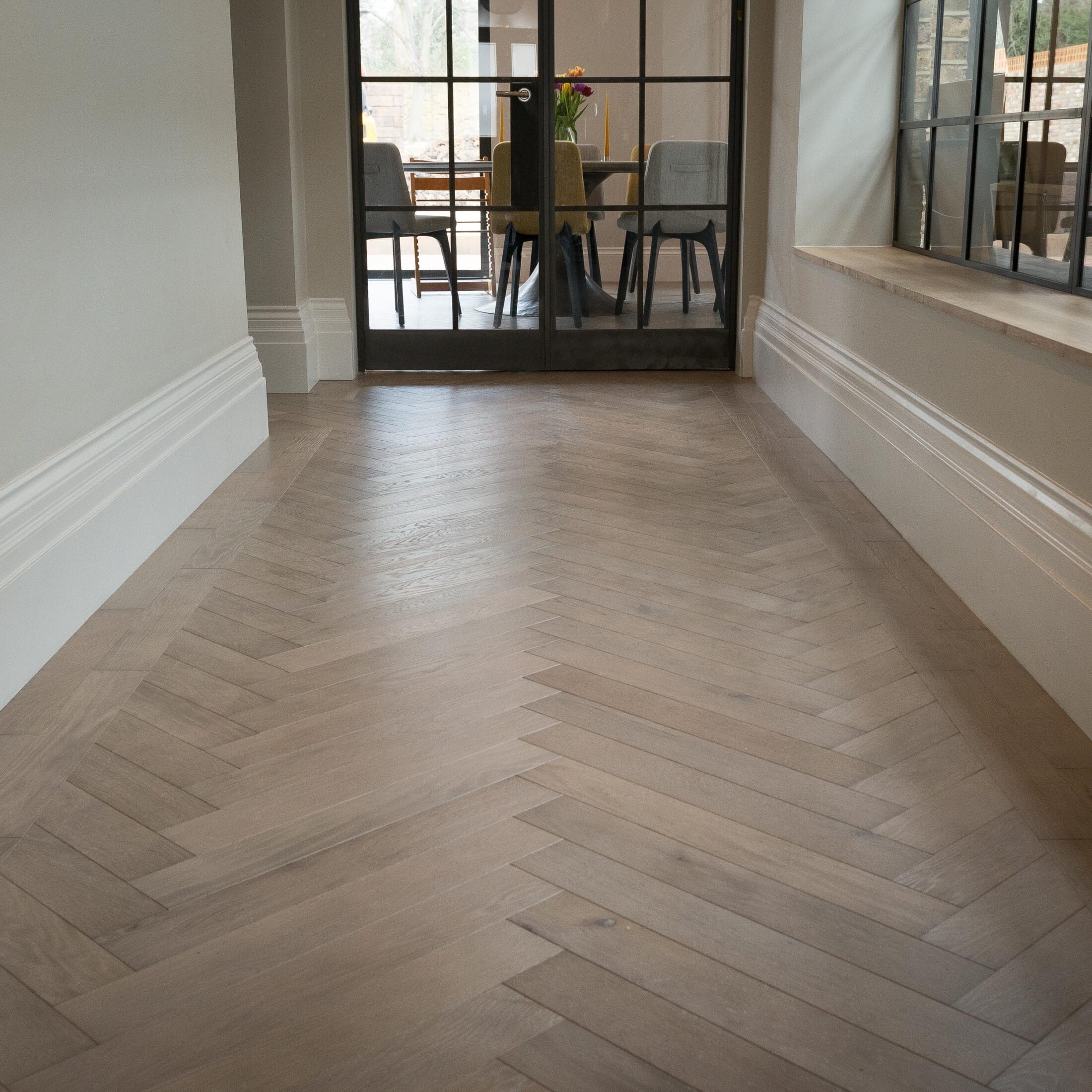Herringbone Wood Flooring: Herringbone Wood Floor Bathroom

Herringbone wood flooring, with its distinctive V-shaped pattern, has been a popular choice for centuries. Its timeless appeal stems from its versatility, durability, and ability to add a touch of sophistication to any space. From historical palaces to modern homes, herringbone patterns have consistently graced floors, demonstrating their enduring popularity and adaptability.
The History and Origins of Herringbone Wood Flooring, Herringbone wood floor bathroom
Herringbone patterns have a rich history, dating back to ancient times. The name itself is derived from the V-shaped pattern resembling the bones of a herring fish. The earliest known examples of herringbone patterns can be found in Roman mosaics and pavements, where they were used to create intricate designs. During the Middle Ages, herringbone patterns became popular in Europe, particularly in churches and castles, where they were used to adorn floors and walls.
The popularity of herringbone wood flooring reached its peak during the Victorian era, when it was widely used in grand homes and public buildings. The intricate patterns and craftsmanship of Victorian herringbone floors were a testament to the era’s love for detail and elegance.
Today, herringbone wood flooring remains a popular choice for homeowners and designers alike. Its classic appeal and versatility make it suitable for a wide range of styles, from traditional to contemporary.
The Visual Appeal of Herringbone Patterns
Herringbone patterns are visually appealing for several reasons. First, they create a sense of movement and dynamism, adding dimension and character to a space. The angled pattern draws the eye across the floor, making the room feel larger and more inviting. Second, herringbone patterns can be used to create a variety of effects, depending on the wood species and the size of the planks. For example, a wide plank herringbone pattern can create a bold statement, while a narrow plank pattern can create a more subtle and refined look. Third, herringbone patterns can be used to highlight the natural beauty of wood. The alternating direction of the planks creates a unique interplay of light and shadow, showcasing the grain and texture of the wood.
Examples of Herringbone Wood Flooring in Various Settings
Herringbone wood flooring has been used in a wide variety of settings throughout history and continues to be a popular choice in contemporary design. Here are a few examples:
* Historical Settings:
* Versailles Palace: The Palace of Versailles in France features extensive herringbone wood flooring throughout its grand halls and chambers. The intricate patterns and craftsmanship of the floors are a testament to the opulence and grandeur of the palace.
* Hampton Court Palace: Another iconic example of herringbone wood flooring in a historical setting is Hampton Court Palace in England. The palace features herringbone floors in its grand halls, state rooms, and private apartments. The floors are a testament to the craftsmanship and artistry of the time.
* Contemporary Settings:
* Modern Homes: Herringbone wood flooring is a popular choice for modern homes, where it can add a touch of sophistication and elegance to any space. The pattern can be used to create a variety of effects, from minimalist and sleek to warm and inviting.
* Commercial Spaces: Herringbone wood flooring is also increasingly popular in commercial spaces, such as restaurants, hotels, and retail stores. The pattern can add a touch of class and sophistication to any business environment.
Herringbone Wood Flooring in Bathrooms

Herringbone wood flooring, with its timeless elegance and intricate pattern, adds a touch of sophistication to any space. However, when considering this flooring option for a bathroom, it’s crucial to address practical considerations to ensure both aesthetic appeal and longevity.
Moisture Resistance and Durability
The bathroom environment presents unique challenges due to its high humidity and potential for water spills. While wood is naturally porous, herringbone wood flooring can be made suitable for bathrooms with proper selection, installation, and maintenance.
- Wood Species: Choosing the right wood species is paramount. Hardwoods like oak, maple, and walnut are known for their durability and resistance to moisture. These woods are naturally denser, making them less susceptible to warping or damage from water exposure.
- Finishes: Applying a durable finish is crucial to protect the wood from water damage. Polyurethane finishes, especially those with a high gloss level, offer excellent protection against moisture and wear. Oil-based finishes are also a good option, but they may require more frequent maintenance.
- Installation: Proper installation is key to preventing water damage. The subfloor should be level and dry, and the wood planks should be installed with a gap between them to allow for expansion and contraction due to moisture changes.
- Sealing: Sealing the floor is essential to prevent water from penetrating the wood. A sealant should be applied to the entire floor, including the seams between the planks. Regular reapplication of the sealant is necessary to maintain its effectiveness.
Design Inspiration

Herringbone wood flooring adds a touch of elegance and sophistication to any bathroom, regardless of the design style. Whether you’re aiming for a modern, traditional, farmhouse, or contemporary aesthetic, herringbone patterns can be seamlessly integrated to create a cohesive and stylish space.
Modern Bathroom Designs
Herringbone wood flooring in a modern bathroom often features clean lines, minimalist accents, and a neutral color palette.
- Consider using a light-toned wood species, such as white oak or maple, to create a bright and airy feel.
- Pair the herringbone flooring with sleek, modern fixtures, such as chrome faucets and minimalist vanities.
- Introduce pops of color through towels, rugs, or artwork to add visual interest.
Traditional Bathroom Designs
Herringbone wood flooring can also be incorporated into traditional bathroom designs.
- Choose a darker wood species, such as walnut or cherry, to create a warm and inviting ambiance.
- Complement the herringbone flooring with classic fixtures, such as brushed nickel faucets and ornate vanities.
- Add touches of traditional charm with decorative accents, such as framed prints or antique mirrors.
Farmhouse Bathroom Designs
For a farmhouse bathroom, herringbone wood flooring adds a touch of rustic charm.
- Select a reclaimed wood species, such as barn wood or weathered oak, to create a vintage feel.
- Pair the herringbone flooring with farmhouse-style fixtures, such as white ceramic sinks and distressed cabinets.
- Add rustic accents, such as galvanized metal baskets or vintage lanterns, to complete the farmhouse aesthetic.
Contemporary Bathroom Designs
Contemporary bathroom designs often feature bold colors, geometric patterns, and unexpected textures.
- Consider using a dark wood species, such as ebony or wenge, to create a dramatic and sophisticated look.
- Pair the herringbone flooring with modern fixtures in bold colors, such as black or gold.
- Add pops of color and texture with statement accessories, such as a patterned rug or a sculptural vase.
